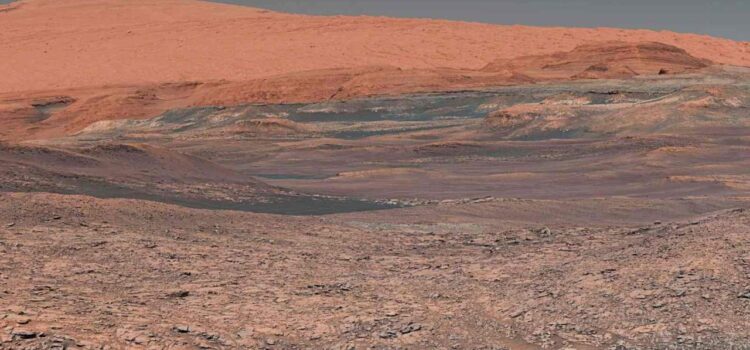
Those who dream of probable terraforming Mars for human habitation have located quite a few wish at the Red Planet presently containing water, as it might lend validity to the concept that it may maintain to keep water (and an atmosphere) below the proper conditions. However, a brand new look at from researchers at each the University of Texas and University Grenoble Alpes, posted via way of means of Geophysical Research Letters in AGU Journals (American Geophysical Union), shows that what scientists concept turned into water won’t truely be, well, water.
The group’s speculation is that the invention of a very brilliant radar go back 1.4km beneathneath the ice at the bottom of the south polar cap, which turned into lengthy concept to be a hallmark of underground lakes or an aquifer, is truely being resulting from some thing like volcanic substances. In different words, the group believes that some thing like a cluster of volcanic rock can be answerable for those radar readings in place of an underground water source.
Researchers used a number of the more or less 15 years’ really well worth of measurements supplied via way of means of MARSIS (the Mars Advanced Radar for Subsurface and Ionosphere Sounding) to look at the reflectivity of Mars’ floor and examine readings from diverse substances to what turned into theorized to be an underground water source.
The look at details
Theories of water on Mars were searching extremely tenuous for some time now, with numerous different theories imparting up greater plausible (however much less exciting) explanations. As the look at itself acknowledges, “the modern temperature and stress on the Red Planet makes solid liquid water not likely on the floor.” While to this point it’s now no longer not possible for Mars to comprise water beneathneath the floor, it’s now no longer searching very in all likelihood.
As the look at states in its conclusion, the readings among the substances at the planet’s floor and something it’s miles that MARSIS detected below the floor of the south pole appear like very similar. To the factor wherein it’s in all likelihood that they are, in fact, the same.
“Our consequences offer insights into what modern terrains present on the floor of Mars can be answerable for the SPLD brilliant basal reflections,” the look at explains, “Most of these brilliant areas are subdivisions of large gadgets geologically associated with volcanic constructs.”
This doesn’t imply the look for water on Mars is over, however. According to the University of Texas, Cyril Grima, the look at’s corresponding creator and scientist for the University of Texas Institute for Geophysics (UTIG), is operating with Isaac Smith, a Mars geophysicist from York University, to recommend destiny water-locating missions the use of radar. Presumably to discover greater proof of former existence at the planet, or to assist choose out capacity destiny touchdown webweb sites at the floor.










